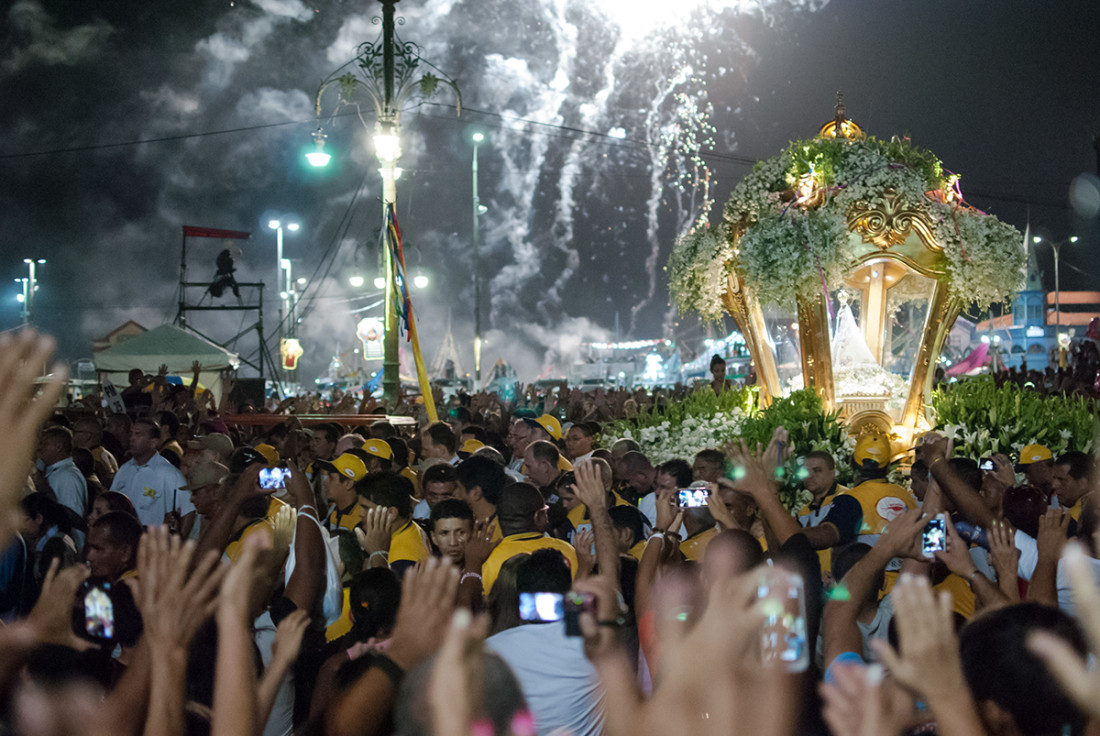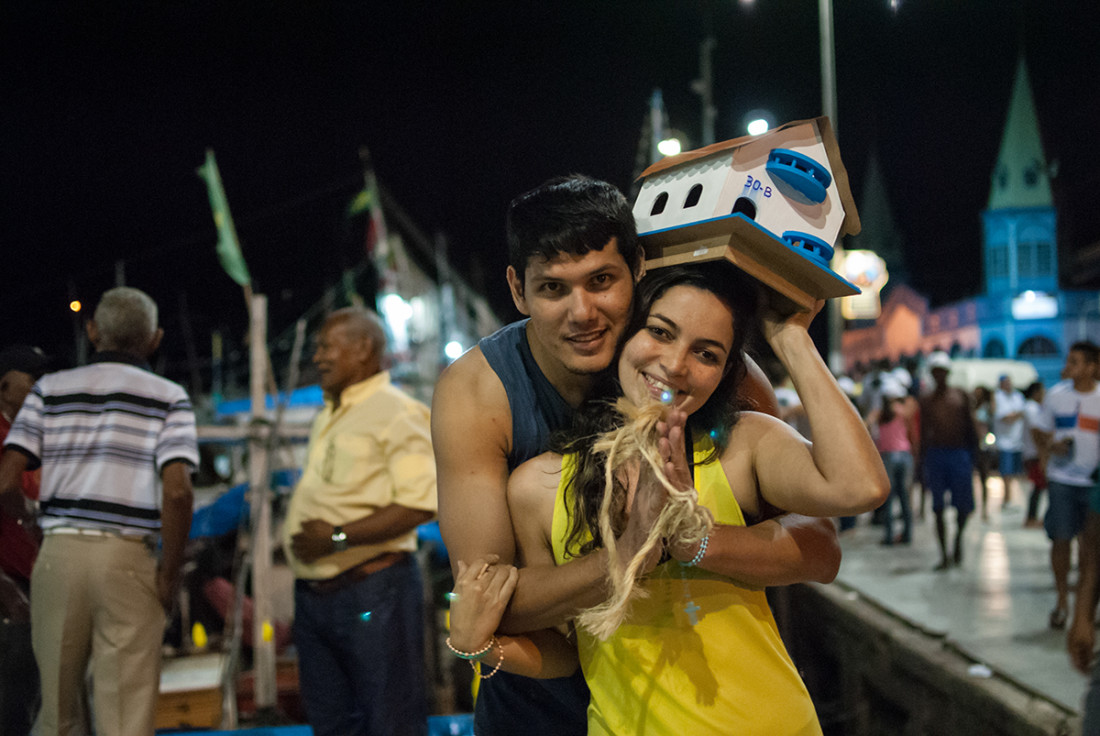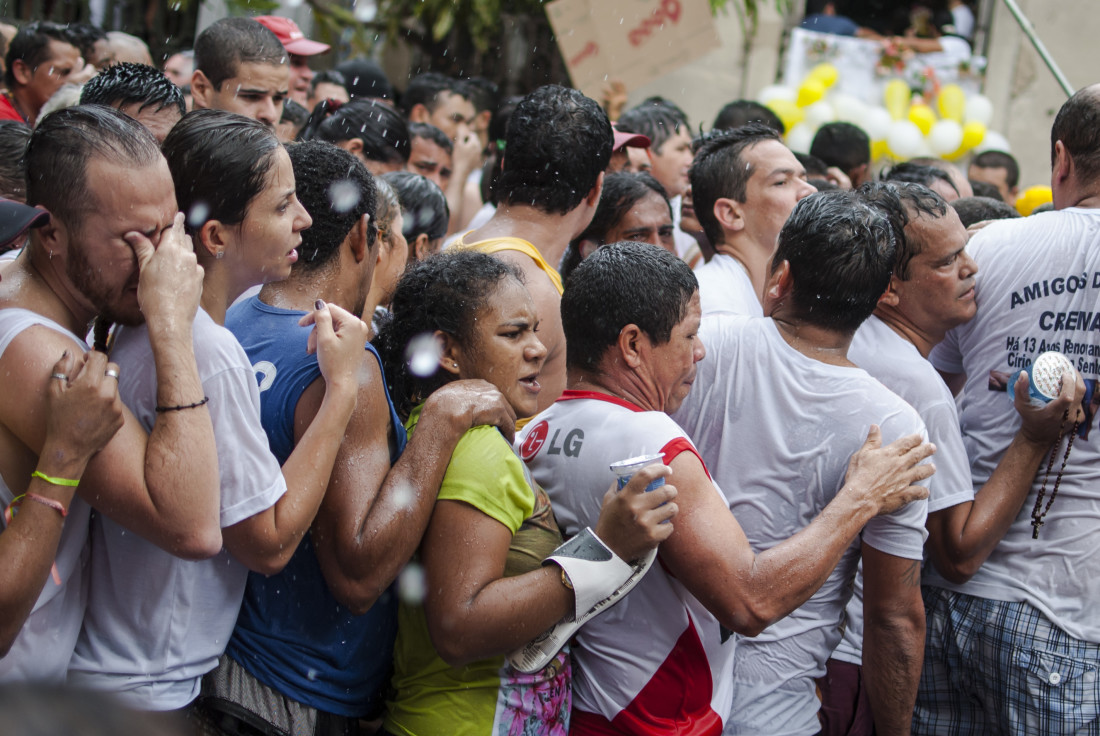































O Círio de Nazaré
In the October of 2014, I had the chance to visit Belém, in Brasil, and take part in the Círio de Nazaré, one of the largest and participated religious celebrations in the world, now recognised by UNESCO as Intangible Cultural Heritage of Humanity.
The second week of October is the most important, when about two million faithfuls join the Sunday procession in honor of the Virgin of Nazareth.
Everything begins on the Friday night, when the statue of the Virgin moves from the Basílica de Nossa Senhora de Nazare, in the city center, to reach the Cidade Velha, the old town and its fishermans’ port, on Rio Amazonas. Here the statue of the Virgin spends the night within the Salesian Chapel, where it gets decorated with flowers for the following day.
On sunrise Saturday, is the day of the procissão fluvial. The statue of the Virgin leaves the port on board of a military ship, followed by a colourful fleet of hundreds boat, sailing along the riverfront, acclaimed by enthusiastic crowds along the embankment. Those on board sing, pray and dance. It’s indeed an unusual atmosphere in a truly unique event, with activities one wouldn’t expect such as coffee breaks and charity riffles; far from the conventional idea of what a catholic celebration normally is.
The main day is Sunday, when the procession walks through the streets of city center, sorrounded by a massive crowd. Barefoot faithfuls try to get closer the statue, carrying ex vote as bricks, legs, cars, or books representing their claim to the Virgin Mary. The statue of the Virgin follows the true symbol of the festivity: “corda”, a thick anchor rope carried by who wants to pay his sins. Faithfuls also aim at cutting a piece of corda and keep it as the most precious memory of the event; but this is not as easy as it could seem. People try to cut the rope in any possible way, struggling and fighting against those who want to steal it from their hands.The heat, the human dancity and the physical struggle help create a quite dangerous scenario, that nobody wants to miss.
As I grew up in a Catholic Italian family this experience let me truly astonished and me realise how different the way people interpret the same religion across the world could be.
Date
15 Ottobre 2016
Category
Photography
